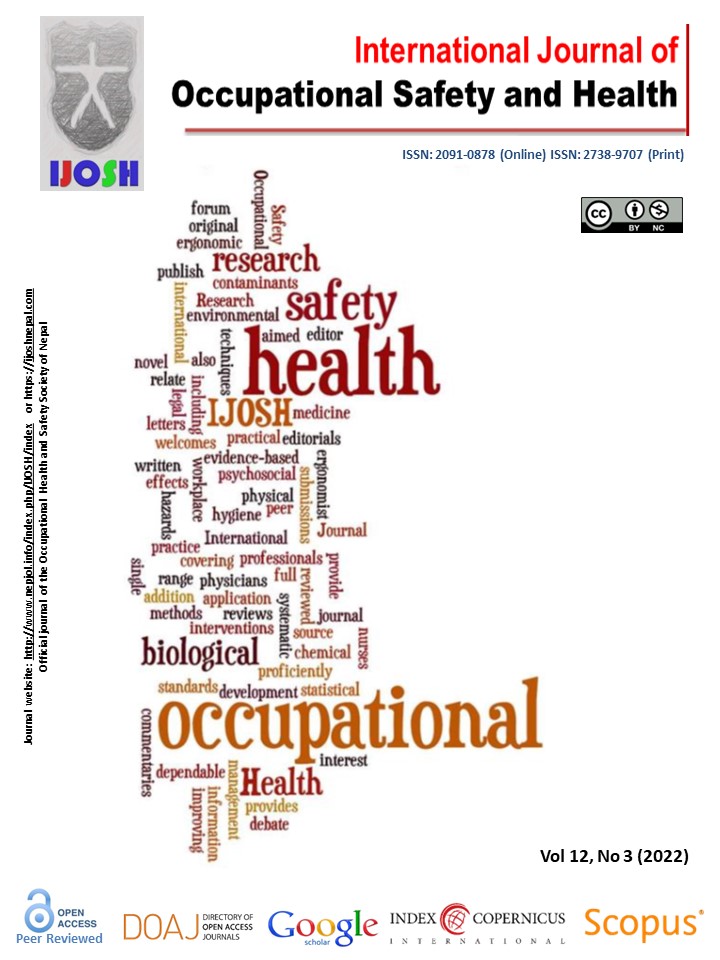Pulmonary Functions and Work-Related Musculoskeletal Disorders of Road Construction Workers of West Bengal, India
DOI:
https://doi.org/10.3126/ijosh.v12i3.40316Keywords:
Pulmonary function, Asphalt workers, respiratory impairments, odds ratioAbstract
Introduction: Road paving construction workers are exposed to bitumen, asphalt, and other aliphatic amines. They are also exposed to high temperatures and dust during the processing of asphalt production and transport of hot asphalt and bitumen to the working site. Bitumen fumes and asphalt produce respiratory irritations and shortness of breath in asphalt workers. Thus, the purpose of this study was to assess the respiratory impairment of asphalt workers on exposure to bitumen fumes and to assess cardiovascular stress on exposure to high temperatures and heavy workload.
Methods: This cross-sectional study has been made on 32 asphalt workers and 20 control group workers of Kolkata city of West Bengal and its surrounding. Anthropometric parameters, blood pressure, and heart rate were measured by standard procedure. Respiratory parameters were taken by Digital Spirometer (Spirovit SP1) and respiratory symptoms & musculoskeletal problems were recorded by a standard questionnaire.
Results: The study indicated that prolong exposure to bitumen fumes may enhance the risk of lung impairment by reduction of all respiratory parameters (p< 0.05-0.001). Smoking habits and the reluctance to use protective gadgets among asphalt workers increase the risk of respiratory distress.22% of workers reported chest tightness, 20% had Chronic Bronchitis and10% suffered from Bronchial asthma. The maximum percentage of Paver operators showed Chest tightness (83.33%), Chronic Bronchitis (100%) and Bronchial asthma(66.66%). Musculoskeletal Disorder(MSD) among Paver operators was maximum(33.3-50%). Odds ratio values of the prevalence of respiratory disorder and MSD with >10years of exposure to bitumen fumes vary from 2-4.5. Exposure to high temperature and heavy workload, mainly among asphalt strippers and paver operators might be the reason for higher heart rate. The awkward working posture might be the cause of musculoskeletal disorders among them.
Conclusion: The use of appropriate respiratory protection and the introduction of modern equipment and technologies can reduce the emission of bitumen fumes to protect the health of asphalt workers.
Downloads
Downloads
Published
How to Cite
Issue
Section
License
Copyright (c) 2022 Anindita Mandal Majee, Sutanu Dutta

This work is licensed under a Creative Commons Attribution-NonCommercial 4.0 International License.
This license enables reusers to distribute, remix, adapt, and build upon the material in any medium or format for noncommercial purposes only, and only so long as attribution is given to the creator.





